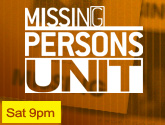 |
| MESSAGE BOARDS | truTV | truTV VIDEO | THE SMOKING GUN |
| You are in: ABOUT CRIME LIBRARY/SPECIAL OF THE WEEK | ||||
|
Celebrity Crimes, Part 2  Steven Seagal and the Mob Steven Seagal and the MobIt could have been a scene from "The Sopranos" except it was real. Two members of the Mafia and an associate had met to discuss the shakedown of a Hollywood movie star. The actor was Steven Seagal, a martial artist who specialized in playing tough-guy heroes on the big screen. It wasn't Seagal's first meeting with these men. In December 2000, the same group had showed up in Toronto on the set of Seagal's film, Exit Wounds. This time they brought along 350-pound Richard "the Lump" Bondi, an enforcer for the family, hoping to get their point across to the actor. Seagal had severed his relationship with Jules Nasso, having decided to stop making violent action films on the advice of his spiritual guru. But Ciccone and company weren't interested in Seagal's spiritual awakening. Nasso had already lined up four action-adventure projects for himGenghis Khan, Blood on the Moon, Smash and Grab, and Prince of Central Parkall of them in the slam-bang style that had made Seagal famous. The Gambino family wanted him to keep making action films, and they also wanted him to pay them $150,000 for each of his futures projects.   Sid Vicious and Nauseating Nancy Sid Vicious and Nauseating NancySid Vicious, born John Simon Richie, joined Londons Sex Pistols band in 1977 and was still in his teens when they became one of the top bands in Britain. Ironically they were making money hand over fist as the icons of rebellion, the heart and soul of a generation alienated from rampant capitalism. The femme fatale was Nancy Spungen, very troubled young woman from a well-off Philadelphia family, who was determined to bed this young Sex Pistols celebrity, and bed him she did with a vengeance. Nobody could stand her as friends watched Sid become dominated by her. Ultimately hed go cuckoo when he wasnt with her. Finally, their lives became classic co-dependencies: heroin and each other, until one morning she was found stabbed to death and he was charged with her murder.  O.J. Simpson O.J. SimpsonThis may be considered the crime of the last century. It became the most publicized case in US history. It cost over $20 million to fight and defend, ran up 50,000 pages of trial transcript and called 150 witnesses. No movie or television courtroom drama would have dared to unfold the way this one did, and it was not without coincidence that it evolved in Los Angeles, so often referred to by cynics as "La La Land." The rest of the country became obsessed with the empty, celebrity-dominated West Los Angeles backdrop to the crime. To many, particularly in minority communities, the trial of Orenthal James Simpson became not so much a determination of his guilt or innocence of murder in the first degree, beyond a reasonable doubt, but whether or not a black man could find justice in a legal system designed by and largely administered by whites. To others, many of whom were white, the key question was whether a mostly minority jury would convict a black celebrity regardless of the weight of evidence against him. More than 10 years after the murder of his ex-wife and her friend, the former football star continues to stir controversy. Analysis of the murder and road rage trials, and forensics.   Hip Hop Homicide Hip Hop HomicideThe logo for Death Row Records is a blindfolded black man strapped into an electric chair at the moment of execution. Death Row is the label that made rappers such as Snoop Dog, Dr. Dre, and Tupac Shakur famous, and its logo is emblematic of the violent posturing adopted by many gangsta rap artistsnot just Death Row artistsin their quest to sell their music. A rapper's public face is frequently a gangbanger's scar face, whether he has a genuine gang affiliation or not. But as rap's popularity grew in the 1990s, the violent posturing turned real. Tales of beatings and public humiliations surfaced. Rappers slandered one another with increasing viciousness and frequency. An East Coast-West Coast feud developed, pitting Death Row Records, which is based in southern California, against New York's Bad Boy Entertainment. The feud eventually escalated from a battle of words to a bloody war. Its two most prominent casualties were the rival rappers Tupac Shakur and Notorious B.I.G. Who killed Tupac Shakur and Notorious B.I.G and were they really the intended victims? Get the scoop on the suspects, motive and theories. Past Specials |
|
 |
|
CrimeLibrary.com is a part of the Turner Entertainment New Media Network.
Terms & Privacy Guidelines


